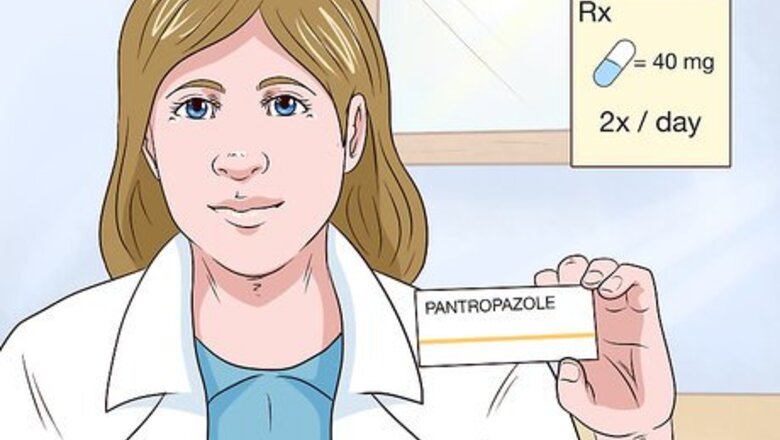
views
Taking the Tablets
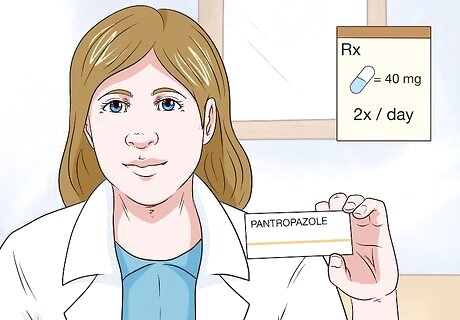
Follow your doctor's dosing recommendations. Prescription pantoprazole usually comes in 40mg tablets and your doctor will tell you to take 1 or 2 tablets a day depending on what health condition you're treating.Did You Know? You can buy over-the-counter (OTC) pantoprazole in a lower dose to treat mild stomach acid problems. These tablets are sold as pantoprazole and contain 20mg instead of 40mg. For example, if you have GERD or stomach ulcers, you may need to take 20mg to 40mg a day. If you're treating Zollinger-Ellison syndrome, you'll take 40mg to 80mg a day.
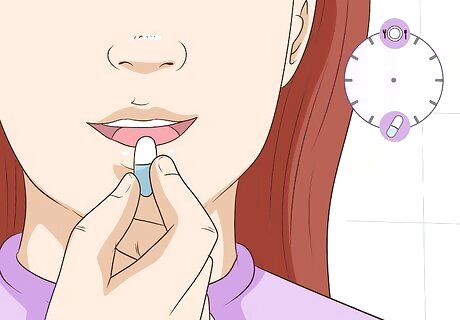
Plan to take pantoprazole 30 to 60 minutes before your first meal of the morning. The medication will work more successfully on an empty stomach, so try to take your tablet 1 hour before breakfast. This will give the medicine time to shut down the acid pumps that cause heartburn before you start eating. Studies show that taking pantoprazole in the morning is more effective than taking it in the evening. If you're supposed to take pantoprazole twice a day, take a dose in the morning before breakfast and another 1 hour before dinner. Try to time the dosages so they're 12 hours apart.
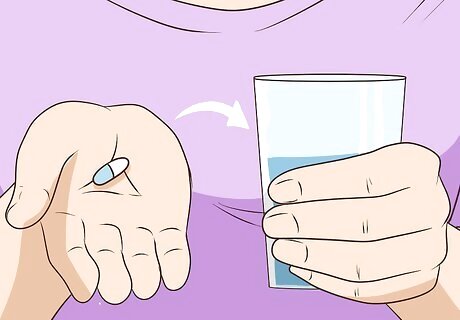
Swallow the tablet whole using water. Instead of crushing, chewing, or breaking the tablet, swallow it whole with water. This will help the medication break down in your stomach properly. Crushing the medication can make the pantoprazole release too quickly in your stomach. If you struggle to swallow the coated tablets, ask your doctor about taking liquid pantoprazole.
Mixing Liquid Pantoprazole
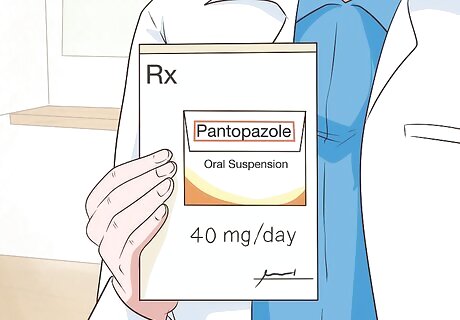
Get your prescription of oral suspension granules fulfilled. If you can't swallow pantoprazole tablets, your doctor can prescribe liquid pantoprazole. When you get the medication from the pharmacy, the pantoprazole will be granular and in several pouches. Each pouch will be 40mg once you properly rehydrate the granules. Keep in mind that you should never divide the amount in the pouch. If the doctor prescribes the liquid pantoprazole, it's because you'll need to get at least a full 40mg a day. The granule form is also good for people with Percutaneous endoscopic gastrostomy (PEG) tubes who can’t take anything by mouth.
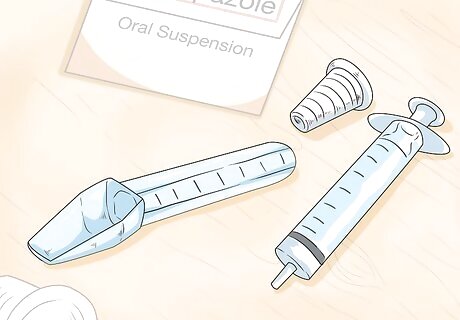
Ask for an oral syringe or spoon when you get the prescription. Since you'll need to mix up and measure your own liquid medication, ask the pharmacist for an oral medication syringe or medicine spoon so you can get an accurate dose. Avoid using a standard kitchen spoon for measuring the juice since these aren't precise.
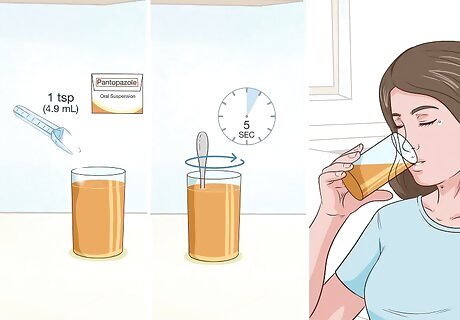
Mix the pouch of granules with 1 teaspoon (4.9 ml) of apple juice and drink it. Use the syringe or spoon to measure the juice into a small cup and pour the granules from 1 pouch into it. Stir the mixture for 5 seconds and then drink it. To ensure you're getting all of the medication, pour another 1 teaspoon (4.9 ml) of apple juice in the cup and swirl it a little before drinking it.Variation: You can also dilute the granules in 1 teaspoon (5 g) of applesauce instead of apple juice. The drug manufacturer insists that you don't mix the granules in water or any other liquid. The granules will not dissolve completely in the juice.

Plan to take liquid pantoprazole 30 minutes before your first meal of the morning. Since liquid pantoprazole begins working faster than pantoprazole tablets, you only need to wait 30 minutes after taking the pantoprazole before eating. If you need to take 2 doses of pantoprazole a day, take your first dose in the morning and your second dose about 30 minutes before dinner.
Using Pantoprazole Effectively
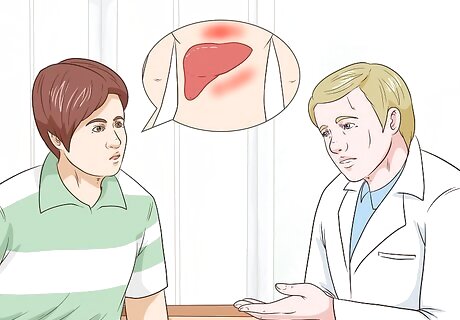
Tell your doctor your medical history and current medications. Let your doctor know if you're allergic to any medication, if you have liver problems, if you have lupus, or if you're scheduled to have an endoscopy within a month.Tip: It's important to let your doctor know which medications you're currently taking. Some antibiotics, HIV medications, cancer treatments, and salts for anemia can interact with pantoprazole. You should also tell your doctor if you're allergic to foods, dyes, or preservatives. Pantoprazole is often prescribed for people over 12 years old.
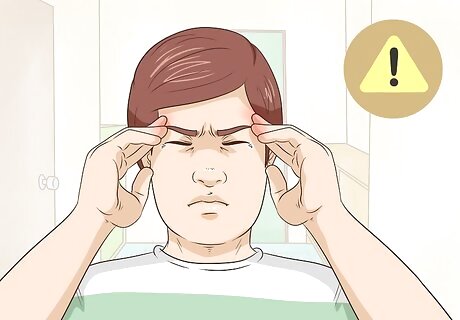
Watch for side effects, such as headaches or constipation. You might also experience other mild side effects, which include diarrhea, dry mouth, or nausea. These should go away once you stop taking the medication. Let your doctor know if you have any of these more serious side effects: Allergic reaction Dizziness Difficulty breathing Muscle spasms Irregular heartbeat
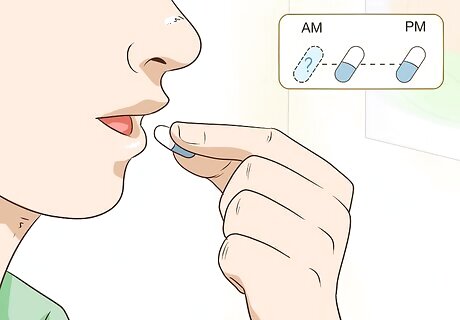
Take a missed dose as soon as you can but don't take a double dose. If you forget to take your pantoprazole in the morning, take it as soon as you remember. Then, take the following dose at the normal time. Avoid waiting for the next dose to take twice the recommended amount.Tip: If you typically take pantoprazole twice in a day, take the skipped dose as soon as you remember, unless you're supposed to take the second dose in less than 4 hours. If you remember the missed dose and you're supposed to take the next dose in less than 12 hours, skip the missed dose.
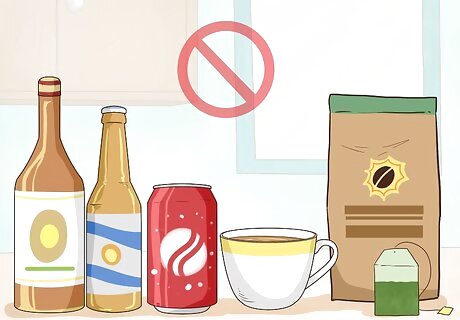
Cut back on alcohol and caffeine. Although you can still drink alcohol and caffeinated beverages while taking pantoprazole, these can cause your stomach to make more acid. Higher levels of stomach acid can make your acid reflux or heartburn worse. The Centers for Disease Control recommends limiting your daily alcohol intake to 1 drink for women or 2 drinks for men. Rich, fried, or spicy foods can also make your stomach symptoms worse so try to limit these foods.

Talk with your doctor after taking pantoprazole for 2 weeks. Let your doctor know if the symptoms you're treating with pantoprazole have gotten better. If so, your doctor might have you keep taking pantoprazole. If it doesn't seem to be working, your doctor may adjust your dosage or change medications. Sometimes, you might start with a high dose of pantoprazole and then your doctor will reduce your dose after 1 to 2 months.
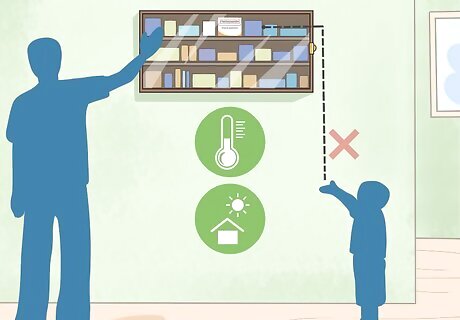
Store pantoprazole in a dry place away from children. Keep the medication in its original container and put it somewhere out of direct light. The pantoprazole should be kept at room temperature and away from moisture, so you might want to put it on a high shelf instead of in the refrigerator or bathroom. If you have leftover pantoprazole that you don't plan on taking, return it to the pharmacy so they can dispose of it properly.



















Comments
0 comment